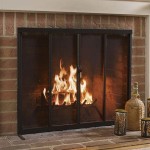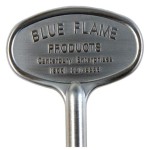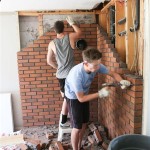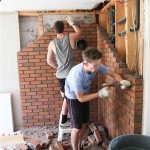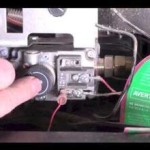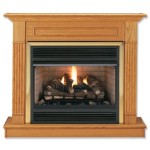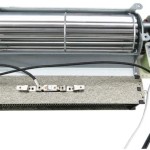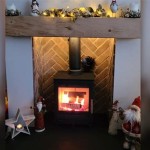Understanding Zero Clearance Gas Fireplaces
Zero clearance gas fireplaces, also known as ZC fireplaces or factory-built fireplaces, represent a significant advancement in fireplace technology. Their design allows for installation directly against combustible materials without the need for extensive masonry or specialized framing. This characteristic distinguishes them from traditional masonry fireplaces, which require substantial clearances to prevent fire hazards.
The term "zero clearance" refers to the fireplace's ability to be installed with little to no separation required between its outer firebox and adjacent combustible building materials, such as wood framing, drywall, or insulation. This capability dramatically simplifies and reduces the cost of installation, making gas fireplaces a versatile option for both new construction and remodeling projects. The key to this safe proximity lies in the fireplace's insulated firebox and engineered airflow system, which effectively manage heat transfer.
The demand for efficient and aesthetically pleasing heating solutions has fueled the popularity of zero clearance gas fireplaces. They provide the ambiance and warmth of a traditional fireplace without the inherent risks and complexities associated with masonry construction. Moreover, they offer a range of styles and features, catering to diverse architectural preferences and heating requirements. These fireplaces are an excellent choice for homeowners seeking a convenient, safe, and visually appealing alternative to conventional wood-burning fireplaces or other heating systems.
Key Point 1: The Safety Mechanisms of Zero Clearance Fireplaces
The safety of zero clearance gas fireplaces is primarily ensured through their construction and design. A crucial element is the insulated firebox, which comprises multiple layers of metal and insulation that contain the intense heat generated during operation. This insulation minimizes heat transfer to the external surfaces of the fireplace, preventing combustible materials from reaching ignition temperatures. The insulating material can vary, but often includes mineral wool, ceramic fiber blankets, or other high-temperature resistant materials.
Another critical safety feature is the air circulation system. This system draws cool air from the room, circulates it around the firebox, and then expels the warmed air back into the room. This process not only distributes heat efficiently but also helps to maintain a safe temperature on the exterior of the fireplace. The airflow is typically engineered to ensure that the outer surfaces remain below a specific temperature threshold, even during prolonged use.
Furthermore, zero clearance gas fireplaces are rigorously tested and certified by independent testing agencies, such as Underwriters Laboratories (UL) or Intertek (ETL). These certifications confirm that the fireplaces meet stringent safety standards and performance criteria. The testing process involves evaluating the fireplace's ability to withstand high temperatures, prevent gas leaks, and maintain safe clearances from combustible materials under various operating conditions. Adherence to these standards provides assurance to consumers that the fireplace has been thoroughly vetted for safety and reliability. Manufacturers typically provide clear installation instructions that detail the specific clearances required and any necessary precautions to ensure safe operation. It is imperative to follow these instructions meticulously to avoid potential hazards.
Key Point 2: Installation Considerations for Zero Clearance Gas Fireplaces
While zero clearance gas fireplaces offer simplified installation compared to their masonry counterparts, proper installation remains crucial for safety and optimal performance. The specific requirements for installation can vary depending on the model and manufacturer, but some common considerations apply to most installations.
First, the fireplace must be installed on a stable and level surface. The floor must be capable of supporting the weight of the fireplace, which can range from a few hundred to several hundred pounds. In some cases, additional structural support may be required, particularly in older homes or when installing the fireplace on an upper floor. The chosen location must also provide adequate access for gas line connections and venting.
Venting is a critical aspect of zero clearance gas fireplace installation. These fireplaces require a dedicated venting system to expel combustion byproducts safely. The type of venting required depends on the fireplace model and may include direct vent, B-vent, or vent-free options. Direct vent fireplaces utilize a sealed combustion system that draws air from outside the home and vents exhaust gases directly to the outside. B-vent fireplaces use existing chimneys or dedicated vent pipes to exhaust combustion gases. Vent-free fireplaces, while requiring no venting, rely on catalytic converters to minimize emissions and are subject to local code restrictions.
It is of utmost importance to consult with a qualified and licensed professional for the gas line connection. The gas line must be properly sized and installed to ensure an adequate supply of gas to the fireplace. A gas leak test should always be performed after the connection is made to identify and rectify any potential leaks. Adhering to local building codes and regulations is also crucial. These codes often specify requirements for fireplace installation, venting, and gas line connections. Obtaining the necessary permits and inspections ensures that the installation complies with all applicable safety standards and regulations. Failure to adhere to these regulations can result in fines, insurance claim denials, or even safety hazards.
Key Point 3: Choosing the Right Zero Clearance Gas Fireplace
Selecting the ideal zero clearance gas fireplace involves careful consideration of several factors, including heating requirements, aesthetic preferences, and budget constraints. It is crucial to assess the size of the space to be heated and choose a fireplace with an appropriate BTU (British Thermal Unit) rating. A fireplace that is too small may not adequately heat the room, while one that is too large may result in overheating and wasted energy. Manufacturers typically provide guidelines on the appropriate BTU rating for different room sizes.
Furthermore, zero clearance gas fireplaces are available in a wide range of styles and designs. Options include traditional fireplaces with realistic log sets, contemporary linear fireplaces with glass media, and corner fireplaces that maximize space utilization. Consider the overall aesthetic of the room and choose a fireplace design that complements the existing décor. The finish of the fireplace, such as black, brushed nickel, or stainless steel, can also impact its visual appeal. Some fireplaces offer customizable features, such as adjustable flame height, accent lighting, and remote control operation.
Another important aspect to consider is energy efficiency. Look for fireplaces with high energy efficiency ratings, such as those certified by the Energy Star program. These fireplaces are designed to minimize energy consumption and reduce heating costs. Features such as electronic ignition, programmable thermostats, and variable flame control can also contribute to improved energy efficiency. Finally, it is crucial to research different manufacturers and read customer reviews to assess the quality and reliability of the fireplace. Choose a reputable manufacturer with a proven track record of producing high-quality, durable fireplaces. Be sure to fully understand the warranty coverage provided by the manufacturer. A comprehensive warranty can protect against potential defects or malfunctions and provide peace of mind.
In addition to these factors, consider the long-term maintenance requirements of the fireplace. Regular maintenance, such as cleaning the glass, inspecting the vents, and replacing the pilot light, can help to ensure optimal performance and longevity. Some fireplaces may require more frequent maintenance than others. Finally, remember to factor in the cost of installation when budgeting for a zero clearance gas fireplace. Installation costs can vary depending on the complexity of the project, the type of venting required, and the location of the fireplace. Obtaining quotes from multiple qualified installers can help to ensure that you are getting a fair price.
Selecting the right zero clearance gas fireplace is a significant investment. By carefully considering these factors, it is possible to choose a fireplace that provides warmth, ambiance, and lasting value.
.aspx?strip=all)
Zero Clearance Fireplaces Explained Regency Fireplace S

Zero Clearance Fireplaces Valor Gas

Enviro G42 Gas Zero Clearance Fireplace Fergus

Fireplace Insert Vs Zero Clearance Maple Mtn

Zero Clearance Fireplaces Gas Wood

Zero Clearance Fireplaces Gas Wood

Zero Clearance Vs Prefabricated Fireplace Full Service Chimney

The Zero Clearance Fireplace Vs Ortal S Cool Wall Technology

Osburn Everest 2 Zero Clearance Wood Stove Fireplace Fireplaces By Cameron

Zero Clearance Fireplaces Valor Gas

